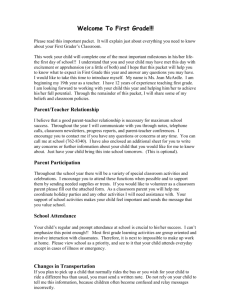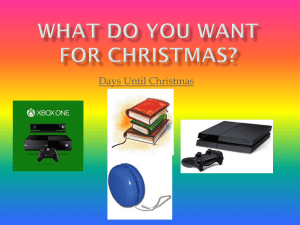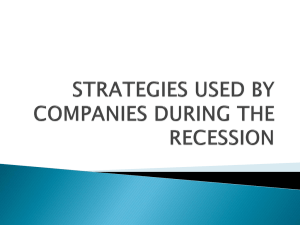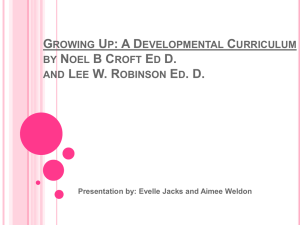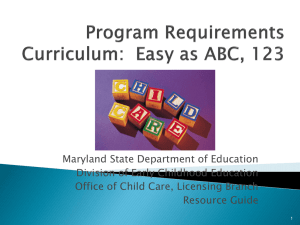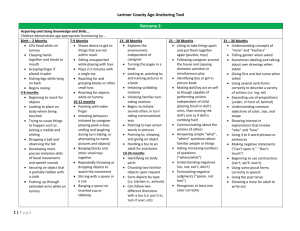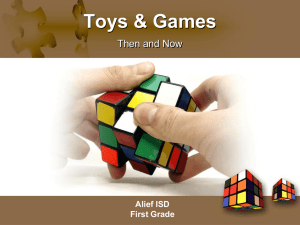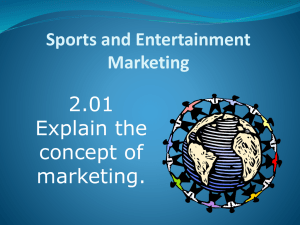Infusion of Literacy into the Science Curriculum
advertisement
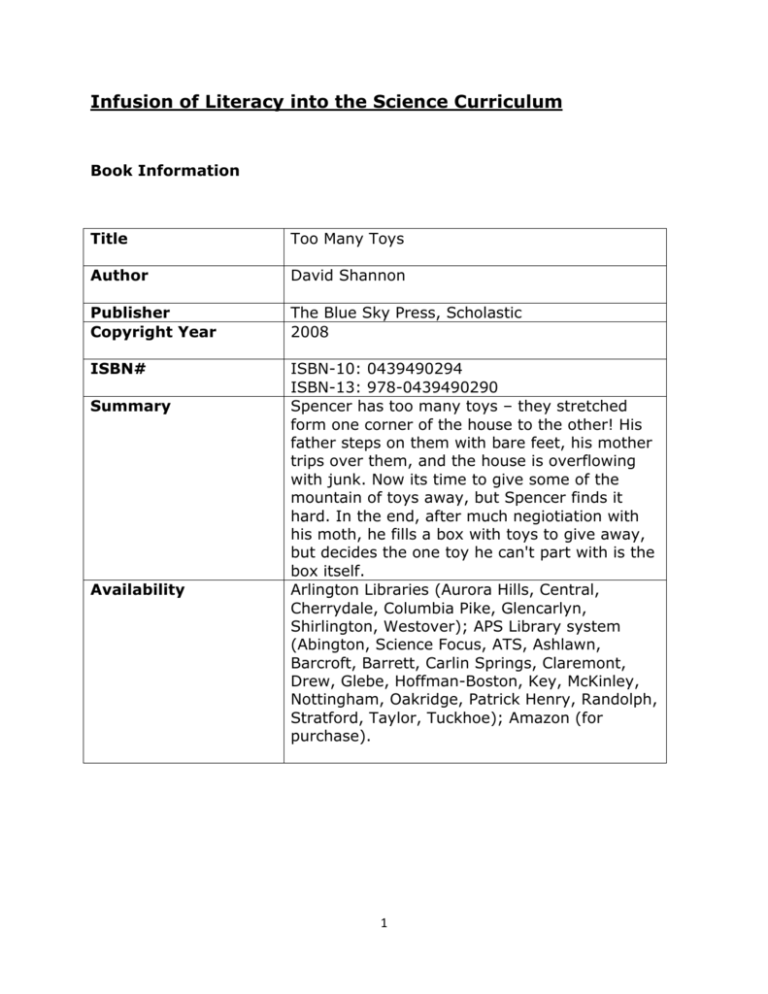
Infusion of Literacy into the Science Curriculum Book Information Title Too Many Toys Author David Shannon Publisher Copyright Year The Blue Sky Press, Scholastic 2008 ISBN# ISBN-10: 0439490294 ISBN-13: 978-0439490290 Spencer has too many toys – they stretched form one corner of the house to the other! His father steps on them with bare feet, his mother trips over them, and the house is overflowing with junk. Now its time to give some of the mountain of toys away, but Spencer finds it hard. In the end, after much negiotiation with his moth, he fills a box with toys to give away, but decides the one toy he can't part with is the box itself. Arlington Libraries (Aurora Hills, Central, Cherrydale, Columbia Pike, Glencarlyn, Shirlington, Westover); APS Library system (Abington, Science Focus, ATS, Ashlawn, Barcroft, Barrett, Carlin Springs, Claremont, Drew, Glebe, Hoffman-Boston, Key, McKinley, Nottingham, Oakridge, Patrick Henry, Randolph, Stratford, Taylor, Tuckhoe); Amazon (for purchase). Summary Availability 1 How can the book content be infused into the science curriculum? Grade Level K-5 Strands Scientific Investigation, Reasoning and Logic; Force, Motion, and Energy; Earth Resources Kindergarten Scientific Investigation, Reasoning and Logic K.1; K.2- Five senses, descriptions and sequencing Earth Resources K.11- Reusing, recycling, conserving Grade 1 Scientific Investigation, Reasoning and Logic 1.1- Classifying, measuring, predicting Grade 2 Scientific Investigation, Reasoning and Logic 2.1- Measurement, classification, graphs, unexpected data Grade 3 Scientific Investigation, Reasoning and Logic 3.1- Making predications and observations, data charted, drawing conclusion Earth Resources 3.10 & 3.11- Conservation and resource renewal Scientific Investigation, Reasoning and Logic 4.1- Hypotheses, predictions, measurement Force, Motion, and Energy 4.2 & 4.3 – Electricity and electromagnets Grade 4 Grade 5 Scientific Investigation, Reasoning and Logic 5.1- Classification key, measurement, graphing data, variables 2 Sample Activities Kindergarten After reading the book to the class, students will discuss how and why Spencer made a toy from the box. Be sure to include the vocabulary term reusing, helping students to understand that the box would have gone into the trash, and instead was reused as a toy. Next, students will work in small groups to create a box from a box themselves, using “trash-to-treasures”. When complete, they can share their design with their classmates, and then, of course, play with the box-toys! Grade 4 After reading the book to the class, take home a letter, requesting that their parents help them select one battery-powered toy to bring to class the next day, for the class “Toy Take-Apart Checkpoint Lab”. For safety: 1-Students should wear safety glasses/goggles 2-Demonstrate the correct and safe use of screwdrivers in advance of the activity. Direct adult supervision of students working with screwdrivers is recommended. 3-Remidn students that sharp objects, including metal and plastic objects, can cut skin. The following day, students will work with a partner to open their toy and discover how their toy works (the flow of electricity from the battery through the circuit and back to the battery). They will label the parts and draw what the inside looks like and how it works. When finished, one person stays with the display while the other partner visits the other displays. Then switch jobs, so every students gets to visit the displays. Sample letter to parents: Dear Parents, We are learning about electrical circuits in class. We will do an activity called “Toy Take-Apart”, during which the students ill take apart simple battery-operated children’s toys. If you have any toys that you can donate for this project, it would be greatly appreciated. The toys will be 3 disassembled and may not be usable after the project, so please send only toys that your family does not want anymore. SAFETY: Please make sure the toys are free of battery corrosion. Thank you, 4


